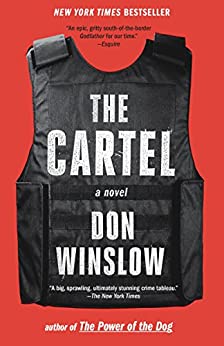More on this book
Community
Kindle Notes & Highlights
Tijuana borders San Diego, where Interstate 5 is the major north–south arterial that runs to Los Angeles. From Los Angeles, product can be stored and moved up the West Coast or anywhere in the United States.
Ciudad Juárez borders El Paso and Interstate 25, which connects to Interstate 40, the main east–west arterial for the entire southern United States and therefore a river of cash for the Juárez cartel.
Nuevo Laredo and Matamoros are the twin jewels of the Gulf. Nuevo Laredo borders Laredo, Texas, but more importantly Interstate 35, the north–south route that runs to Dallas. From Dallas, product can be shipped quickly to the entire American Midwest. Matamoros offers quick road access from Route 77 to Interstate 37, then on to Interstate 10 to Houston, New Orleans, a...
This highlight has been truncated due to consecutive passage length restrictions.
But the real action is in trucks. You can haul product through the desert—by foot, horse, car, and pickup. You can go by water, dumping loads of marijuana and vacuum-sealed cocaine into the ocean for American partners...
This highlight has been truncated due to consecutive passage length restrictions.
Trucking dwarfs them. Since the 1994 NAFTA treaty between the United States and Mexico, tens of thousands of trucks cross the border from Tijuana, Juárez, and Nuevo Laredo every day. Most of them carry legitimate cargo. Many of them carry drugs. It’s the largest commercial border in the world, carrying almost $5 billion in trade a year. Given the sheer volume of traffic, U.S. Customs can’t come close to searching every truck. Even a serious effort to do so would c...
This highlight has been truncated due to consecutive passage length restrictions.
“The Fives”—Interstates 5, 25, and 35—are the arterial veins of the Mexican drug trade.
Cocaine alone is a $30 billion market in the United States annually. Of the cocaine that goes into the United States, 70 percent of it goes through Juárez and the Gulf. That’s $21 billion.
Just across the bridge is the gigantic marketplace, the insatiable consumer machine that drives the violence here. North Americans smoke the dope, snort the coke, shoot the heroin, do the meth, and then have the nerve to point south (down, of course, on the map), and wag their fingers at the “Mexican drug problem” and Mexican corruption.
It’s not the “Mexican drug problem,” Pablo thinks now, it’s the North American drug problem.
citizens need to get high to escape their reality, at the cost of bloodshed and suffering of their neighbors? Corrupt to the soul.


